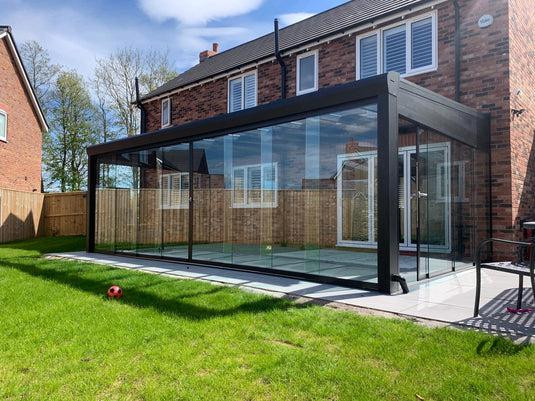In the realm of contemporary interior design, the quest for both functionality and aesthetic appeal has led many homeowners and architects to explore innovative solutions. One such solution gaining traction is the integration of sliding doors into walls. This design concept not only optimizes space but also enhances the overall look of a room, offering a sleek and unobtrusive solution to traditional doorways.
The Concept of Sliding Doors into Walls
Sliding doors into walls, often referred to as pocket doors, are designed to disappear into the wall cavity when opened. Unlike traditional hinged doors that require ample space to swing open, sliding doors glide along a track and seamlessly integrate into the wall, providing a smooth transition between rooms without the need for additional clearance.
Benefits of Sliding Doors into Walls
1. Space Efficiency
One of the most significant advantages of sliding doors into walls is their ability to save space. By eliminating the need for the door swing radius, these doors free up valuable floor space and allow for more flexible furniture arrangements. This is particularly beneficial in smaller rooms where every inch counts.
2. Modern Aesthetics
Sliding doors offer a sleek and contemporary look that can enhance the overall design of a home. Their minimalist design can complement a variety of interior styles, from modern and industrial to classic and eclectic. The ability to conceal the door when not in use contributes to a cleaner, more streamlined appearance.
3. Improved Accessibility
For individuals with mobility challenges or those who use wheelchairs, sliding doors can provide easier access compared to traditional hinged doors. The lack of a swing path makes it simpler to navigate through the door opening, improving overall accessibility.
4. Noise Reduction
Pocket doors can help reduce noise between rooms, as the solid panels can act as a sound barrier. This can be particularly useful in homes where privacy is a concern, such as between bedrooms and living areas.
Considerations and Challenges
1. Installation Complexity
Installing sliding doors into walls can be more complex than traditional doors. It requires precise measurements and careful construction of the wall cavity to ensure the door operates smoothly. Professional installation is often recommended to address these challenges and ensure a perfect fit.
2. Maintenance and Repair
While sliding doors are generally durable, they can sometimes experience issues with the track or door alignment. Regular maintenance, such as cleaning the track and checking for any obstructions, can help prevent problems. In the event of a malfunction, repairs might be more challenging compared to traditional doors, which can be a consideration for some homeowners.
3. Structural Considerations
Integrating a sliding door into a wall may require modifications to the existing wall structure, including reinforcing or resizing the cavity to accommodate the door. This may involve additional costs and planning, especially in older homes with existing structural constraints.
Conclusion
Sliding doors into walls represent a sophisticated and practical solution for modern interior design challenges. By maximizing space, enhancing aesthetics, and improving accessibility, they offer numerous benefits that align with contemporary living needs. However, prospective users should be mindful of the installation complexities and maintenance requirements to ensure they reap the full advantages of this elegant design choice. Whether renovating a small apartment or designing a new home, sliding doors into walls provide a versatile and stylish option for creating seamless, functional living spaces.
For More Info:-





Comments